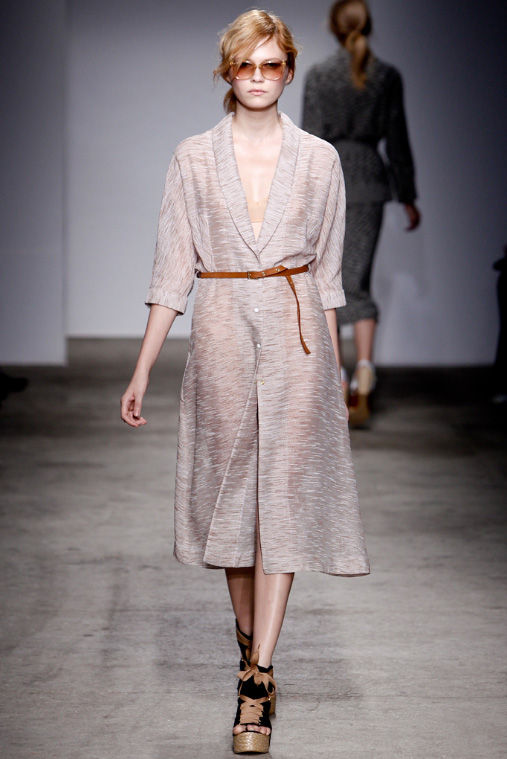

























Backstage, Leroy also name-checked the American painter John Currin, and there was a sensuality, albeit set at a low simmer, in the sheer fabrics that exposed bra tops and briefs.
www.veroniqueleroy.comParisFashion WeekFashion Brand
Backstage, Leroy also name-checked the American painter John Currin, and there was a sensuality, albeit set at a low simmer, in the sheer fabrics that exposed bra tops and briefs.
PARIS, October 2, 2010
By Meenal Mistry
When you think about it in terms of today's political climate, it's strange that religion is such a frequent fashion reference. But there's something about both sides of Catholicism—the pomp and the severe simplicity—that inspires designers. (Here's looking at you, Riccardo Tisci.) Today, Véronique Leroy took her cues from the severe end of the spectrum, with visions of medieval pilgrims to Santiago de Compostela. That translated to super-stripped-down silhouettes in what Leroy called "raw fabrics," like jute, linen, and a nubbly rough-woven tweed.
For the most part, the effect of these peasant dresses and spartan versions of ladylike looks was quite chic. Backstage, Leroy also name-checked the American painter John Currin, and there was a sensuality, albeit set at a low simmer, in the sheer fabrics that exposed bra tops and briefs.
The proceedings weren't without their clunky moments. An oddly dowdy oversize skirtsuit felt entirely out of place. (Though Leroy made the hem du jour—the midi—work nicely everywhere else.) It's also doubtful that jute dresses—which look like burlap—will ever make it off the runway. And if the huge backpacks were Leroy's way of working in the more casually clad pilgrims of today, they only served to distract from an otherwise fine collection.